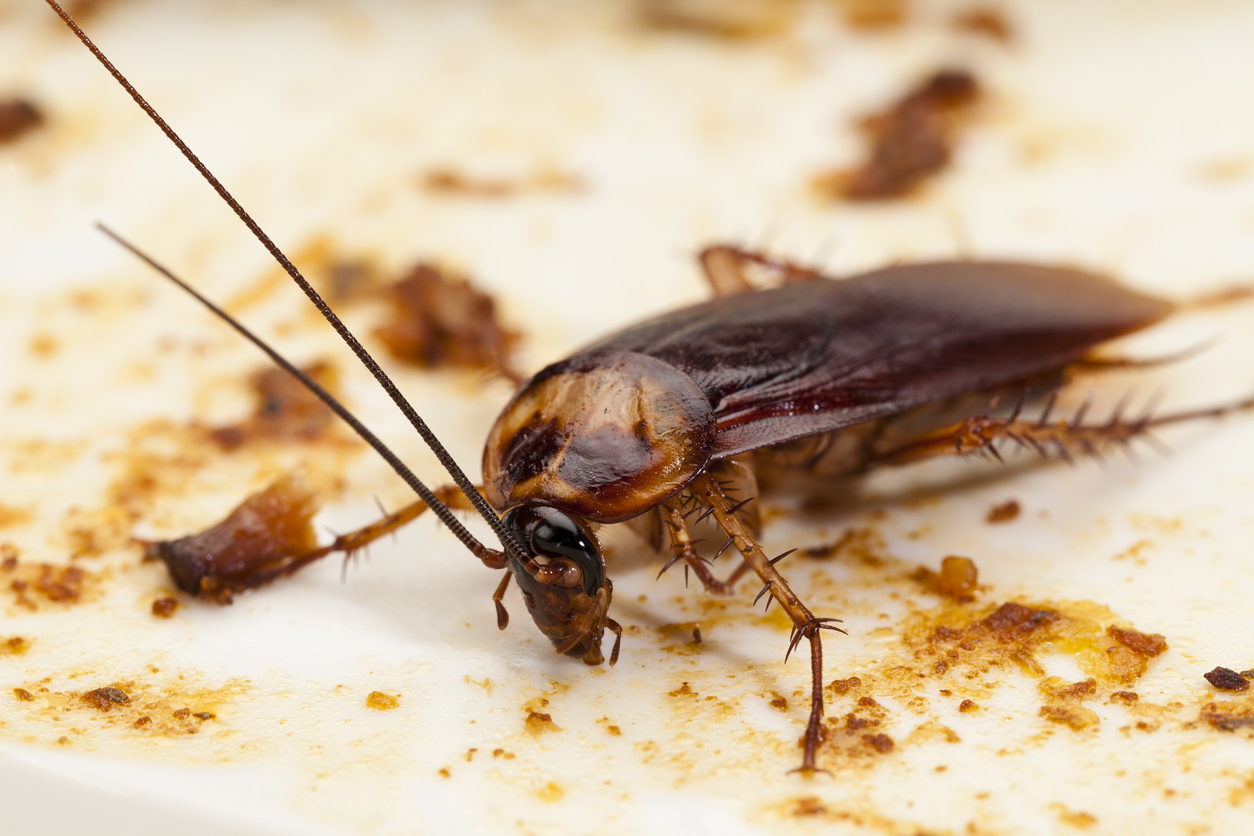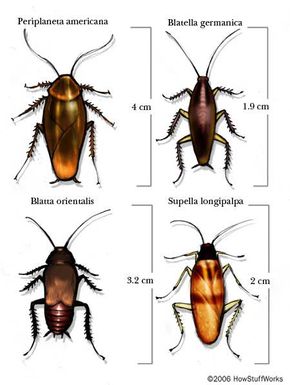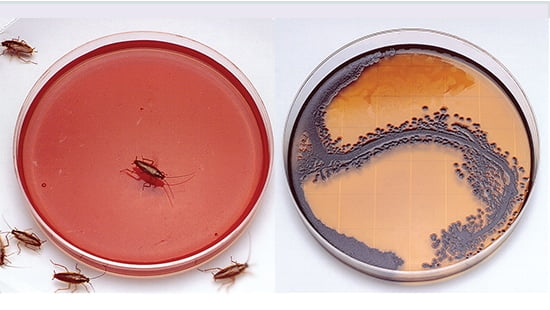Cockroaches spread through infested items, such as bags, boxes, and clothing, as they can cling to and hide in these items. They can also enter homes through cracks and crevices near doorways and windows.
Cockroaches can easily spread from one house to another through infested belongings and common entry points in homes. When moving to a new place, it’s important to inspect and seal off potential entry points to prevent these pests from spreading.
Additionally, being mindful of the items being brought into the new home and taking preventive measures can help avoid the spread of cockroaches. Regular inspections and maintenance can further aid in preventing the spread of these pests.

Credit: drivebyeexterminators.com
Understanding Cockroach Spread
Cockroaches can spread through various means, including hitchhiking on belongings, clothes, and shoes. They can enter homes through cracks and crevices near doors and windows, making it crucial to check for entry points when moving. Additionally, cockroaches can lay eggs in clothes, so it’s essential to be vigilant to prevent infestations in new homes.
Cockroaches are one of the most common pests that can infest your home. They are known to spread diseases and can cause allergies and asthma. Understanding how cockroaches spread can help you prevent an infestation and keep your home safe. In this article, we will discuss the common entry points for cockroaches, how they hitchhike on belongings, and other ways they can spread.Common Entry Points
Cockroaches can enter your home through small cracks and crevices. They can crawl through gaps around windows, doors, and pipes. They can also enter through drains and sewers. Once they find a way in, they can quickly infest your home. It is essential to seal all possible entry points to prevent them from entering your home.Here are some common entry points for cockroaches:- Gaps around doors and windows
- Crevices in walls and floors
- Cracks around pipes and utility lines
- Drains and sewers
Hitchhiking On Belongings
Cockroaches are experts at hitchhiking. They can crawl onto your belongings, such as bags or boxes, or even cling to your clothing or shoes. These resilient creatures can also hitch a ride on unsuspecting individuals by crawling onto your clothing or shoes. This is why it is crucial to inspect your belongings before bringing them into your home.Here are some ways cockroaches can hitchhike on your belongings:- Crawling onto bags or boxes
- Clings to clothing or shoes
- Crawling onto pets or other animals
Other Ways Cockroaches Can Spread
Cockroaches can also spread through other means. They can lay eggs in clothes and other materials that absorb their strong odor. They can also spread from neighboring properties and can enter through any holes in your walls and floors, particularly those around water and utility lines.Here are some other ways cockroaches can spread:- Laying eggs in clothes and other materials
- Spreading from neighboring properties
- Entering through holes in walls and floors
Conclusion
Understanding how cockroaches spread is essential in preventing an infestation. By sealing all possible entry points and inspecting your belongings before bringing them into your home, you can keep your home safe from these resilient pests. Remember to keep your home clean and clutter-free, as cockroaches are attracted to food debris and other organic matter.Cockroach Egg Laying Habits
Cockroaches are notorious for their rapid reproduction, and understanding their egg laying habits is crucial for effective pest control. These resilient pests can quickly infest a space, and their preference for certain nesting areas can exacerbate the spread of their eggs.
Preference For Nesting Areas
Cockroaches exhibit a strong preference for nesting in areas that offer them safety and access to food and water. They often seek out dark, warm, and moist environments, making spaces such as kitchens, bathrooms, and basements prime locations for egg laying. Additionally, cockroaches are attracted to cluttered and undisturbed areas, where they can lay their eggs undisturbed.
Eggs In Clothes
Cockroaches can lay eggs in clothes, posing a particular concern for homeowners. They tend to prefer nesting in areas that are likely to absorb their strong odor, such as places where you store paper, cardboard, or wood. If clothes are stored in wooden dressers or closets, cockroaches may be more inclined to lay their eggs in these garments, leading to potential infestations.
Transmission Of Cockroaches
Understanding how cockroaches spread is crucial for effective pest control. These resilient pests have various methods of transmission, making it important to be aware of potential sources of infestation.
Hitchhiking On People
Cockroaches are experts at hitchhiking, crawling onto belongings such as bags or boxes, and even clinging to clothing or shoes. Their ability to hitch a ride on unsuspecting individuals poses a significant risk of introducing them to new environments.
Spread From Neighboring Properties
In some cases, cockroaches spread from neighboring properties, entering through holes in walls and floors, particularly those around water sources. This makes it essential to address potential entry points and establish preventive measures to avoid infestations.
Factors Affecting Spread
Cockroaches spread through various means such as being carried on belongings, clothing, or shoes. They can enter homes through cracks and crevices near doorways and windows. Additionally, they lay eggs in areas with strong odors, such as wooden dressers where clothes are stored.
Cockroaches are skilled hitchhikers, capable of clinging to items and even people.
Factors Affecting SpreadCockroaches are not only unsightly and unpleasant, but they can also spread diseases and cause allergies. These pests can move from one location to another, and even from one house to another. Several factors affect the spread of cockroaches, including temperature, humidity, and time for hatching.Temperature and HumidityCockroaches thrive in warm, moist environments. They prefer temperatures between 70 and 80 degrees Fahrenheit, making them common in many homes. The higher the humidity, the more likely they are to survive and reproduce. Cockroaches can also survive in dry environments, but they prefer moist areas like kitchens and bathrooms.Time for HatchingThe time for hatching is another factor that affects the spread of cockroaches. Cockroach eggs can hatch in as little as one day, and the nymphs can mature in just a few months. This means that a small infestation can quickly become a large one if not addressed promptly.To prevent cockroaches from spreading, it’s essential to maintain a clean and dry environment in your home. Be sure to seal up any cracks or crevices around doors and windows to prevent entry. If you suspect an infestation, contact a pest control professional to help you get rid of these pests before they spread any further.In conclusion, temperature, humidity, and time for hatching are significant factors that affect the spread of cockroaches. By understanding these factors and taking steps to prevent their spread, you can protect your home from these pests and the health risks they pose.Preventing Cockroach Infestations
Cockroaches can spread between houses through cracks near doors and windows, increasing the risk of infestations. Check for entry points before moving to prevent bringing these pests to your new home. Cockroaches can lay eggs on clothes, especially in areas with their strong odor, like wooden dressers.
Cockroaches are notorious for their ability to spread quickly and infest homes. To prevent cockroach infestations, it’s crucial to take proactive measures to seal entry gaps and to take appropriate actions after visiting infested areas.Sealing Entry Gaps
One of the most effective ways to prevent cockroach infestations is by sealing entry gaps. Inspect your home for any cracks, crevices, or gaps near doorways, windows, and utility entry points. Use caulk to seal these openings, preventing cockroaches from entering your home. Additionally, ensure that screens on windows and doors are intact and without any tears or holes to further deter these pests from gaining access.Actions After Visiting Infested Areas
After visiting infested areas, it’s crucial to take proactive actions to prevent bringing cockroaches into your home. Inspect your belongings for any signs of cockroaches before bringing them inside. Clean and sanitize your belongings, especially luggage, bags, and clothing, to eliminate any potential hitchhiking cockroaches. Avoid storing clothes and other items in areas where cockroaches are likely to nest, such as wooden dressers, to minimize the risk of infestation.By taking these preventive measures, you can significantly reduce the likelihood of a cockroach infestation in your home. Regular maintenance and vigilance are key to keeping these resilient pests at bay.
Credit: knockoutpest.com
Health Risks And Concerns
Cockroaches spread through cracks, crevices, and on belongings, hitchhiking onto clothes, bags, and shoes. They can lay eggs in clothes and enter homes through entry points like doorways and windows, posing health risks and concerns. Regular inspection and prevention methods are crucial in controlling their spread.
Carrying Germs And Bacteria
Cockroaches carry germs and bacteria on their bodies, which can easily contaminate surfaces and food.
- Germs on Feet: Cockroaches bring in germs on their feet from dirty environments.
- Regurgitation: They regurgitate saliva and digestive fluids onto food, spreading bacteria.
Potential Disease Transmission
There is a risk of potential disease transmission associated with cockroaches due to their habits and behaviors.
- Food Contamination: Cockroaches can contaminate food with bacteria, leading to foodborne illnesses.
- Spread of Pathogens: They can spread pathogens through their feces and saliva, increasing the risk of diseases.
Professional Insights On Cockroach Spread
Cockroaches can spread quickly through various means, posing a threat to households. Professionals offer valuable insights on preventing and addressing infestations effectively.
Addressing Infestations
When tackling cockroach infestations, it’s crucial to identify entry points and breeding areas. Seal cracks and crevices near doors and windows to prevent their entry.
Preventing Spread
Implement good hygiene practices to deter cockroaches. Keep food stored securely and maintain cleanliness to eliminate attractants.
Professional Extermination
Seeking professional pest control services is recommended for severe infestations. Experts can use targeted treatments to eradicate cockroaches effectively.
Dealing With Cockroach Infestations
Cockroach infestations can be identified by musty odors, droppings, and shed skin. Cockroaches are nocturnal pests that leave behind feces and egg casings in hidden areas.
To eradicate cockroach infestations, seal entry points, eliminate food sources, and maintain cleanliness. Use baits, traps, or insecticides strategically to combat these pests.

Credit: animals.howstuffworks.com
Frequently Asked Questions
Can Roaches Be Transferred From One House To Another?
Yes, roaches can be transferred from one house to another through cracks and crevices.
How Quickly Do Cockroaches Spread?
Cockroaches can spread quickly, moving from one house to another through cracks and crevices.
Do Roaches Lay Eggs On Clothes?
Yes, cockroaches can lay eggs on clothes. They prefer nesting in areas that absorb their strong odor, such as wood or cardboard. If you store clothes in a wooden dresser, they are more likely to lay eggs in them. Check your house for common entry points and cracks before packing up your belongings to prevent transferring them to a new home.
Conclusion
Cockroaches can be transferred to new homes through cracks and crevices. Prevent infestations by sealing entry points. Remember, they can hitchhike on belongings and clothing. Stay vigilant to avoid spreading these resilient pests. Take proactive measures to protect your home from cockroach infestations.
Related posts:

I’m MD Tanvir, and I bring years of expertise gained from working closely with pest control companies to the forefront. My journey in the industry has inspired me to launch Bug Battler, a platform aimed at equipping people with the know-how to combat pests autonomously. Through Bug Battler, I aim to empower individuals with practical insights to tackle pest infestations effectively.

